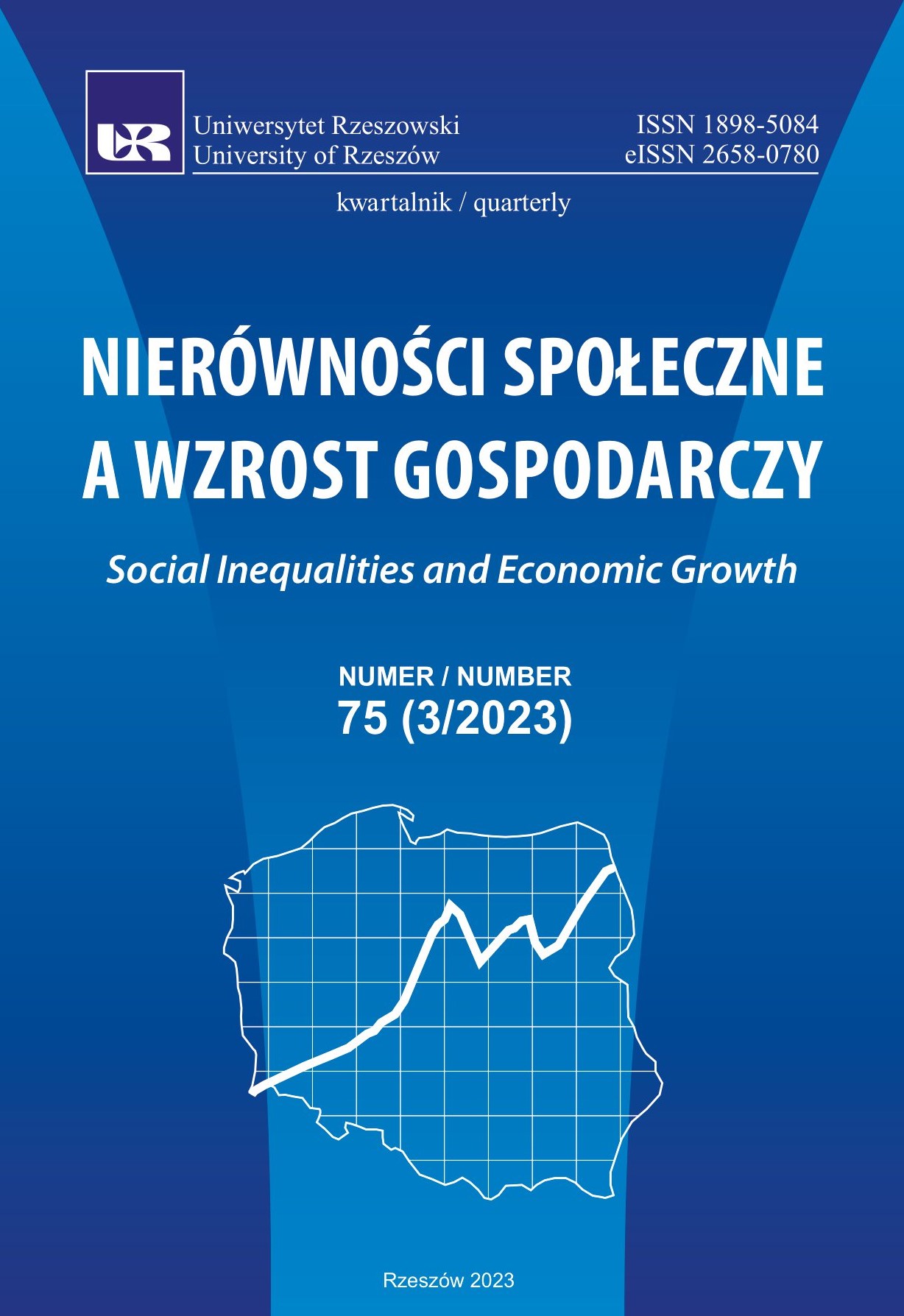Positive work environment in public administration
DOI:
https://doi.org/10.15584/nsawg.2023.3.7Keywords:
motivators, achievement-orientation, innovativeness, personal traitsAbstract
Based on the knowledge on motivation in software development teams, who have used agile methods for several years, this research determines the relationships between motivators, individuals’ characteristics, personality traits and job outcomes in two age groups of public servants in Poland. This study aims to identify motivators that significantly contribute to creating a positive work environment in which public servants feel satisfied with their work and feel connected to their organisation.
The Motivators, Outcomes, Characteristics and Context (MOCC) model, developed by Sharp et al. (2009) to investigate motivation in software engineering, is used to understand the complex topic of motivation in public administration. The analysis of the relationships between the motivators and job outcomes, taking into account achievement-orientation and innovativeness, as well as personality traits, is based on mediation models. The source of the data for the model estimations is a questionnaire survey carried out among public administration employees aged 25–45 with higher education.
The findings show that public servants respond best to three motivators, namely development opportunities, respect and teamwork. Younger public servants need a clear development path, while older public servants want respect from their superiors. Achievement-orientation in younger public servants and innovativeness in older employees, combined with openness and agreeableness, translate into better job outcomes provided that the employees are satisfied with the teamwork.
References
Acuña, S., Gómez, M., Juristo, N. (2008). Towards understanding the relationship between team climate and software quality – a quasi-experimental study. Empirical Software Engineering, 13(4), 401–434. DOI: 10.1007/s10664-008-9074-8.
Allen, N. J., Meyer, J. P. (1990). The measurement and antecedents of affective, continuance and normative commitment to the organization. Journal of Occupational Psychology, 63(1), 1–18. DOI: 10.1111/j.2044-8325.1990.tb00506.x.
Baumgart, R., Holten, R., Hummel, M. (2015). Personality traits of scrum roles in agile software development teams – a qualitative analysis. ECIS 2015 Completed Research Papers. Paper, 16, 1–15. DOI: aisel.aisnet.org/ecis2015_cr/16.
Caliendo, M., Fossen, F., Kritikos, A. S. (2014). Personality characteristics and the decisions to become and stay self-employed. Small Business Economics, 42, 787–814. DOI: 10.1007/s11187-013-9514-8.
Canada’s Public Policy Forum. (2015). Agile government. Responding to citizens’ changing needs. Retrieved from: https://www.pwc.com/si/en/assets/document/agile-government-2015-03 (2015.03.30).
Chuang, A., Shen, Ch-T., Judge, T. A. (2016). Development of a multidimensional instrument of Person-Environment Fit. Applied Psychology, 65(1), 66–98. DOI: 10.1111/apps.12036.
Costa, Jr, P. T., McCrae, R. R. (1995). Domains and facets: Hierarchical personality assessment using the revised NEO personality inventory. Journal of Personality Assessment, 64(1), 21–50. DOI: 10.1207/s15327752jpa6401_2.
Couger, D. J., Zawacki, R. A. (1980). Motivating and managing computer personnel. New Jersey: John Wiley & Sons.
de O. Melo, C., Santana, C., Kon, F. (2012). Developers motivation in agile teams. 38th Euromicro Conference on Software Engineering and Advanced Applications. DOI: 10.1109/SEAA.2012.45.
Gosling, S. D., Rentfrow, P. J., Swann, W. B. Jr. (2003). A very brief measure of the big five personality domains. Journal of Research in Personality, 37, 504–528. DOI: 10.1016/S0092-6566(03)00046-1.
Hayes, A. F. (2013). Introduction to mediation, moderation, and conditional process analysis: A regression-based approach. New York: Guilford Press. DOI: 10.1111/jedm.12050.
Kalenda, M., Hyna, P., Rossi, B. (2018). Scaling agile in large organizations: Practices, challenges, and success factors. Journal of Software: Evolution and Process, 30, 1–24. DOI: 10.1002/smr.1954.
Kristof-Brown, A., Ryan, L., Zimmerman, D., Johnson, E. C. (2005). Consequences of individuals’ fit at work: a meta-analysis of person-job, person-organization, person-group, and person-supervisor fit. Personnel Psychology, 58, 281–342. DOI: 10.1111/j. 1744-6570.2005.00672.x.
Miao, Q., Newman, A., Schwarz, G., Cooper, B. (2018). How leadership and public service motivation enhance innovative behavior. Public Administration Review, 1(2), 71–80. DOI: 10.1111/puar.12839.
Norman, G. (2010). Likert scales, levels of measurement and the “laws” of statistics. Advances in Health Sciences Education, 15, 625–632. DOI: 10.1007/s10459-010-9222-y.
Perry, J. L., Hondeghem, A., Wise, L. R. (2010). Revising the motivational bases of public service: twenty years of research and an agenda for the future. Public Administration Review, 9(10), 681–690. DOI: 10.1111/j.1540-6210.2010.02196.x.
Robinson, P. B., Stimpson, D. V., Jonathan, C., Huefner, J. C., Hunt, H. K. (1991). An attitude approach to the prediction of entrepreneurship. Entrepreneurship Theory and Practice, 15(4), 13–31. DOI: 10.1177/104225879101500405.
Sharp, H., Baddoo, N., Beecham, S., Hall, T., Robinson, H. (2009). Models of motivation in software engineering. Information and Software Technology, 51(1), 219–233. DOI: 10.1016/j.infsof.2008.05.009.
Thomson, K. W. (2009). Underemployment perceptions, job attitudes, and outcomes: An equity theory perspective. Academy of Management Proceedings, 1, 1–6. DOI: 10.5465/AMBPP.2009.44244108.
Young, G. J., Charns, M. P., Heeren, T. C. (2004). Product-line management in professional organizations: An empirical test of competing theoretical perspectives. Academy of Management Journal, 47, 723–734. DOI: 10.5465/20159614.
Downloads
Published
How to Cite
Issue
Section
License
Copyright (c) 2024 University of Rzeszow

This work is licensed under a Creative Commons Attribution-ShareAlike 4.0 International License.


